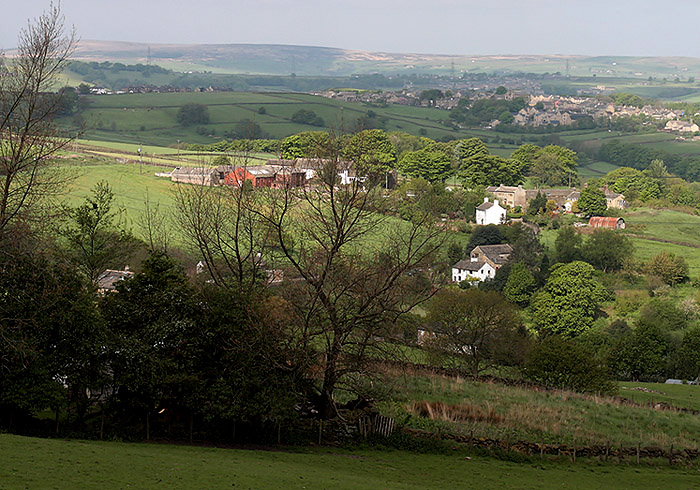
Old Lindley Moor Revisited.
Near Huddersfield, West Yorkshire.
Let's have a gentle stroll, a nice easy pace will do...
By Ian Walker. UK.
Introduction.
About this time last year I wrote an article for Micscape Magazine on a nature walk around Old Lindley Moor and thought it would be nice to update the article with new thoughts and pictures. Last time a lot of the photographs were taken in the lower valleys where tree cover like oak and hawthorn and damper meadows are more common. This time I have stayed mostly on one of the higher bridle-ways and followed the roads to give a different perspective on landscape and nature. I walk this route many times a year and there is always something to be seen whether it is the change in weather patterns or seeing the seasons merge slowly from winter to spring in the endless cycle.
If I were planning to walk some of the higher peaks of the Lake District, Peak District, North Yorkshire Moors etc we would be well advised to have good boots, compass, maps and all sorts of clothes and stuff weighing us down. An hour or so walking the quieter roads of your own area like mine at Old Lindley and I always aim to travel light being close to home. First thing is we don't need fancy gear to take some nice photographs, many cheap digital cameras are available now with good macro [close-up] and more than enough pixels to keep us happy. The cameras on some mobile phones are now surprisingly competent whilst if we wish to spend a bit more and don't mind the extra weight and bulk the digital SLR camera with interchangeable lenses have come down in cost in the last year with some good bargains on the second hand market as people change or upgrade. It's always a good idea to get to know your camera before nature walks and practice in your garden etc with taking flowers and more distant shots this way you will get used to the menus and buttons and will be ready to capture pictures quickly and easily when in the field.
Lets get started, some ideas to get the best out of our walk.
A comfy pair of shoes and a small bottle of water are always useful and some items depending on your own particular interests are a small hand lens.. can be good fun seeing things close up, a modest pair of binoculars that can fit in a pocket avoiding the high power ones with zoom [a good compromise for most days are 8x20] and/or a camera. You will be surprised once taking a camera whether it be in your phone, an older film camera or a modern digital camera how it slows you down as you think about whether this or that picture may work. Remember there are no strict rules in photography only guidelines, do your own thing and have fun!
Rather than getting home and looking through your pictures on a TV or PC monitor and filing them away have a go at creative editing and perhaps writing a story around your photographs.. a bit like this article perhaps.. of what you have seen and at what time of year. Before long you will have a visual diary across the seasons that you can look back on in the coming months and years and perhaps show your children who in turn may get interested in nature or photography.
Old Lindley, its tracks and footpaths are easily reached from Lindley Moor Road which runs parallel to the busy M62 motorway, a turn off to Old Lindley Road near the Wappy Spring pub and following this fairly quiet road will allow you too see the hills and farms taken here.
An old Zen saying...
Sitting quietly doing nothing,
Spring comes, and the grass grows by itself.
... sums up the atmosphere one can have by taking a break for a couple of hours, watch the clouds, see the meadow buttercups dancing in a spring breeze, listening to the birds in trees and hedgerows, all these can have a calming effect. A long time ago I used to climb higher peaks and walk long walks but if you are not careful nature can pass you by. Slow down...
...sit and stare and 'sitting quietly doing nothing' can take on a whole new meaning as the mind rests and contemplates.
If on foot as we pass under the M62 bridge just after we join Old Lindley Road the first small creatures we may notice on some days especially when there is a dampness in the air are many small black millipedes walking the concrete walls of the bridge their many tiny legs creating a 'wave effect' as they cruise along at their own pace. A hundred yards on or so the vista opens up to long distance views to our right to Halifax and beyond and looking further forward we see Old Lindley, the picture below was taken on a typical day. Few days of very good clarity occur in this valley as haze, pollen and some days pollution can obscure the view.. but not to worry you just remember the good days better : )
Old Lindley consists of a few cottages and farm buildings nestling comfortably within a small wooded area giving a sense of peace about the place. Looking left at this part of the road and we have a mix of wild flowers and grasses at the roadside this climbs steeply where higher up heathers and small trees flourish topped with large jutting boulders where on some days kestrels ride the winds and thermals and occasionally firemen practice their climbing skills.

View of Old Lindley through some trees from Old Lindley road, on many occasions such as here low cumulous cloud moving across the sky creates a dappled effect on the landscape, constantly moving and changing shape it can be quite mesmerising. Sadly the cables from converging and diverging pylons make photography tricky at the best of times.
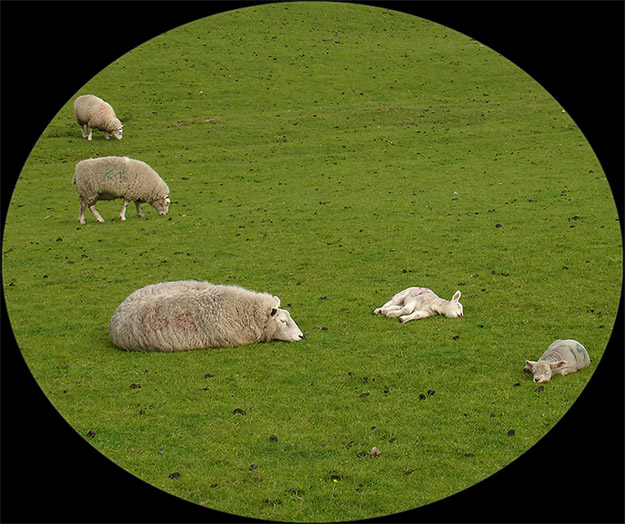
Lambing season and some content sleeping fellows!
The lower grass fields to the right of the road normally have grazing sheep and a few horses but this was a nice shot of mother and lambs enjoying a snooze. Just recently in the last year or two lapwings have taken up residence both during the winter months and through this spring, they may even be nesting now although rooks, magpies and jays frequent the fields and always on the look out for an easy meal. Along the more wooded areas chiffchaff, willow warbler, green and greater spotted woodpecker can be both seen and heard.
As we walk a bit further down Old Lindley Road we see a public bridle-way on our left where a large white painted house stands in its own grounds this is what I call the 'top path' just because it commands higher views of the valleys than the road leading down where as this path keeps its height, its official name is Turley Cote Lane. The first part of the path before the picture taken below has a number of trees growing on the slopes on the left before opening out onto a fairly wide track where horse riders, mountain bikers and dog walkers can be seen from time to time. In the winter and early spring the path can become very boggy as standing water and slope forms small streams running along parts of it with thick rutted mud and pools but as May comes around the mud usually bakes dry and makes for much better walking. In the foreground of the picture below can see bilberry which nestles along the path for a good stretch, the berries are often picked later in the season by folk to make their pies.
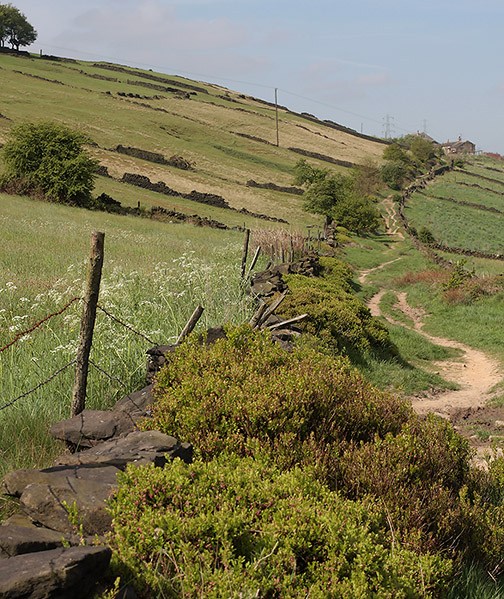
About half way along the path looking west...
At this point of the path both on the left and right we have mainly rough pasture and in some areas further in the distance horses graze where there are higher quality grass fields. With a general slope down from left to right looking west and Old Lindley Road running roughly parallel below we are heading for the end of the path where the farm cottage stands in the above picture but there is no rush as we take in the views and ponder.
Typical birds here are the meadow pipit seen flying high up and gliding down to perch typically on a fence post or dry stone wall, wrens, gold finches who like to eat the seeds of thistle in autumn but can be seen in small groups and swallows swooping low over the grasses catching flies to feed their young. Bilberry bushes cling in small clusters mainly to the left part of the path and a number of hawthorn trees can be seen along the route. Small numbers of slender wasps unlike the common ones seen in our garden like the muddy areas and bumble bees use the grassy banks to burrow and make their nests.
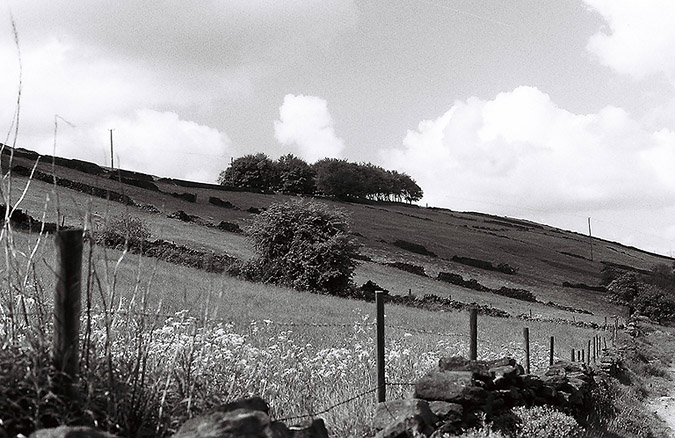
A similar shot taken a day or two after. Ilford Delta 100 film scan.
Just as I was writing this article I decided to blow the dust of an old Nikon FE camera with Nikkor 50mm f1.4 lens and put some Ilford Delta 100 A.S.A. B & W film through. The processing by Ilford labs together with the prints and contact sheet can provide at extra nominal cost a CD of your pictures in both low and high resolutions. We can see how far digital techniques have progressed as Delta 100 film is a low noise film but the full sized images from the CD show moderate amounts of grain giving a 'gritty' look compare this to a modern DSLR from the likes of Canon or Nikon even running a high A.S.A. like 400-800 and much lower equivalent noise is achieved. Having said that in some cases I like the grittier look from the scans specially with the bracken shots later. The dynamic range is also compressed on both the prints and CD scan causing highlight clipping of cloud.
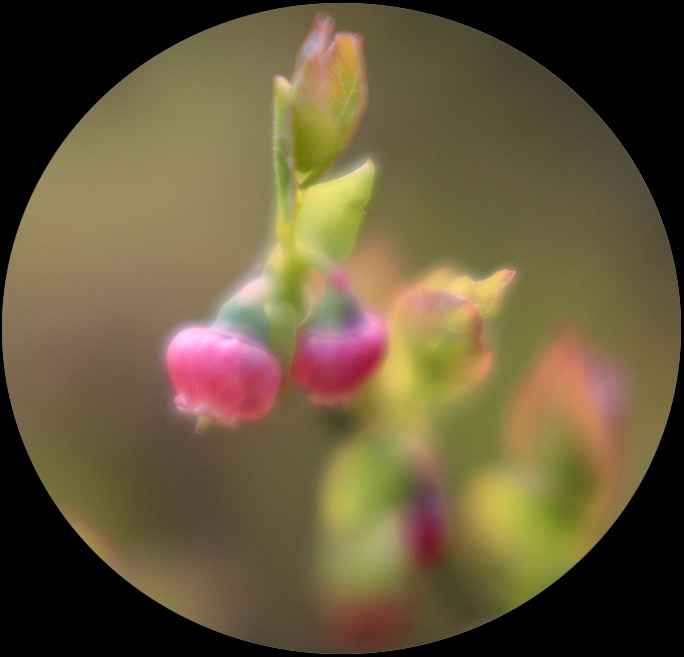
'Soft focus' view of the bilberry flower.
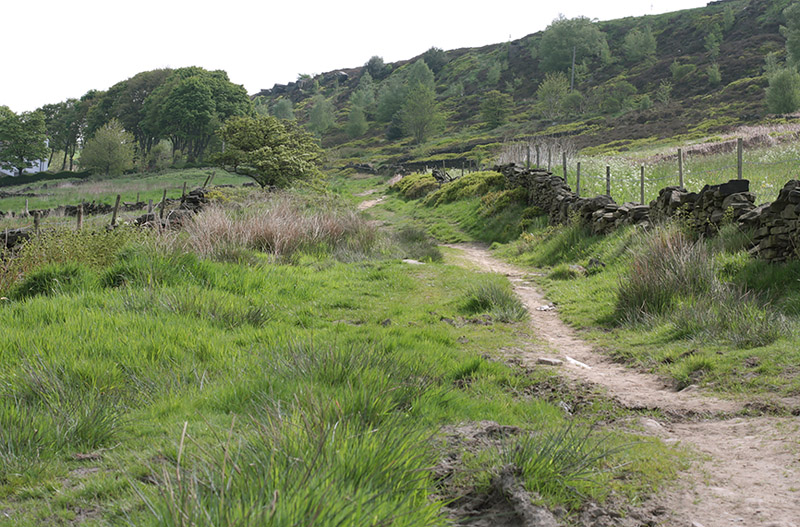
Looking back along the path...
As we are walking down the path past westwards we can look back towards the start of the path with the trees shielding the white house. Cattle are sometimes seen in the lower fields and the gently rising terrain going up towards the motorway are full of different grasses, bracken, dry stone walls and heather. Kestrels can sometimes be seen hovering waiting for the slightest movement in the fields whilst the dry stone wall boundaries provide good habitat for wrens, rabbits and other small mammals.
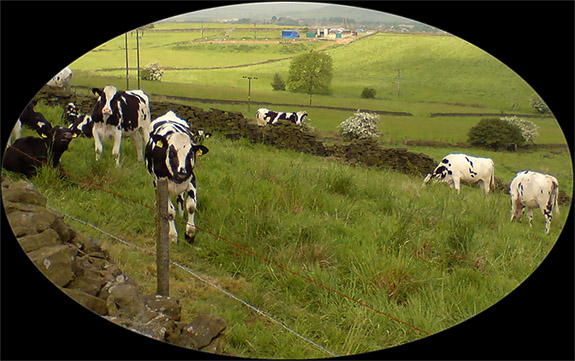
Newly introduced cattle for the season still looking clean!
Sony K800i mobile phone camera.
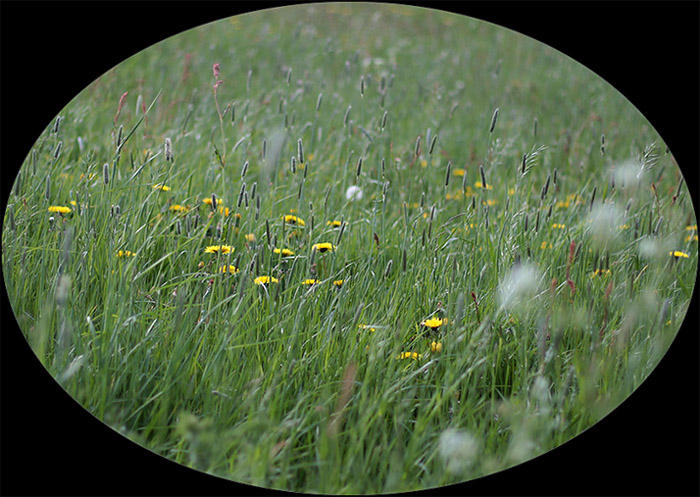
Some of the rough pastures are densely populated with grasses and plants.
Dandelions and several types of grasses abound in spring in the fields surrounding the path here meadow butterflies such as the small tortoiseshell, small white, small copper, peacock, meadow brown, small heath and orange tip can be seen depending on the time of year. The orange tip lays its eggs on the cuckoo flower in spring where small clumps can be seen in amongst the grasses.
We will now take a closer look at some of the flowers, bracken and seeds seen along the path...
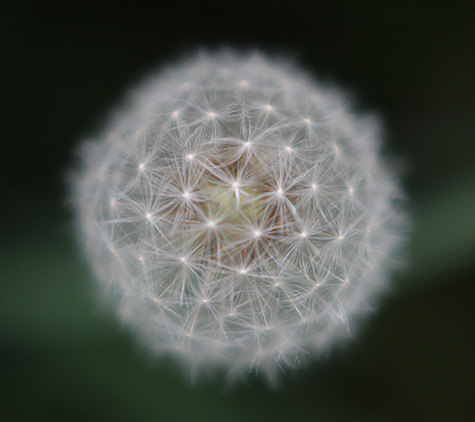
In May there are plenty of dandelion flowers and seed heads.
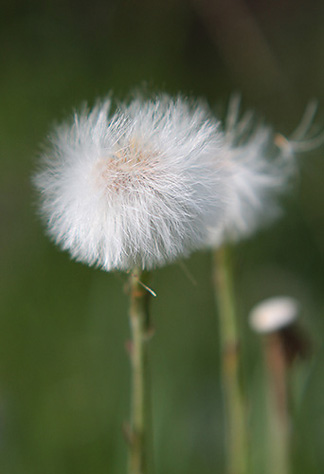
Tufted dandelion like flower gone to seed.
A short photographic study on bracken.
Bracken can look very beautiful e specially when the leaves are emerging in spring time, quickly unfurling they provide a canopy providing shelter for lots of insects whilst several species of spiders spin their webs amongst the foliage and hunt along the ground. In the autumn the bracken dies back, falls to create a rustic intertwining 'carpet' for small mammals to survive the winter. The next pictures few show the different shapes as the leaves take form.
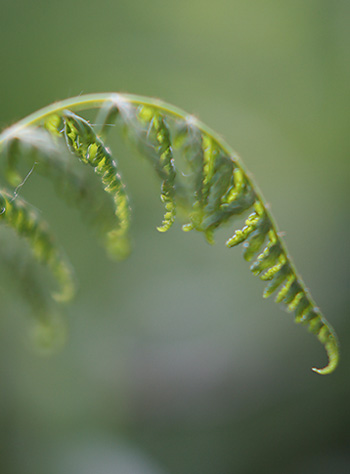
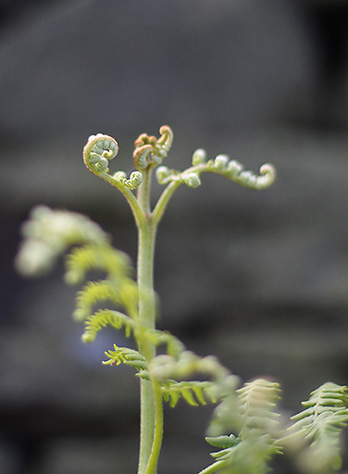
Young leaf against foliage and against the backdrop of a dry stone wall..
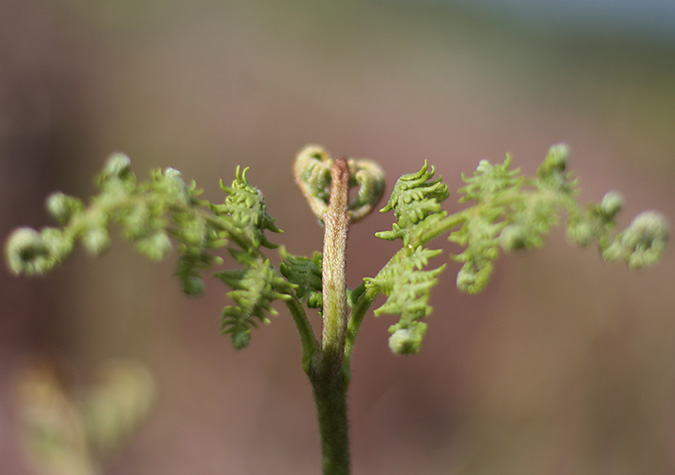
Attractive symmetry catching the morning sunlight.
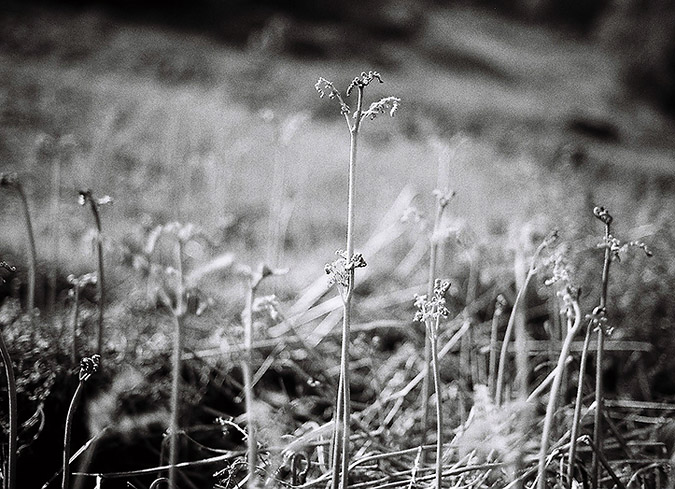
A group of young bracken looking rather ethereal, here the grit of B&W film adds to the mystery.
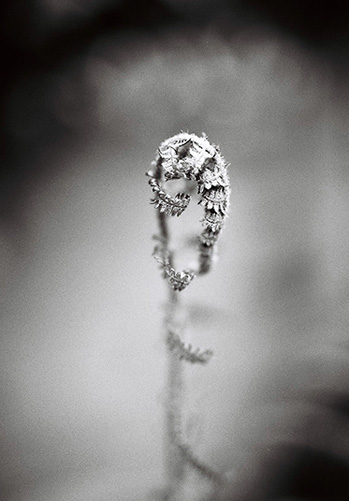
There are many shapes of young leaves, B & W film scan.
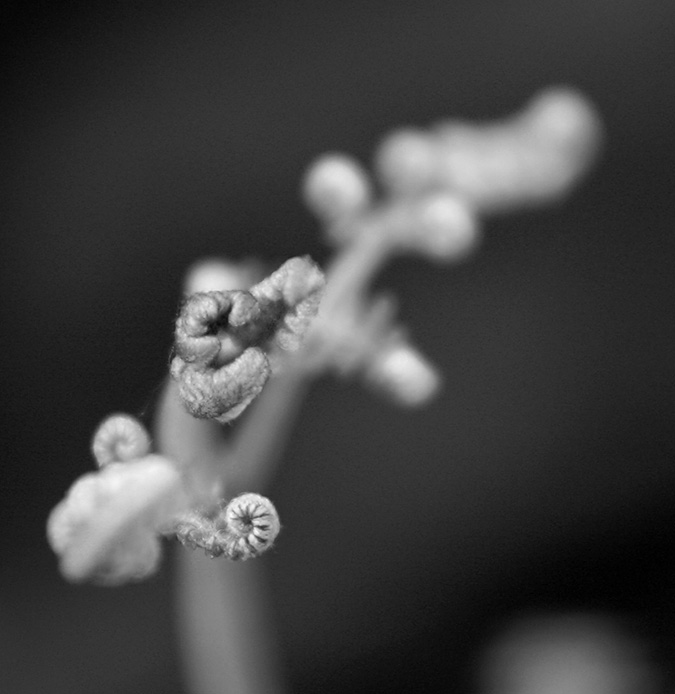
Like a coiled caterpillar the leaves of bracken emerge, once started the leaves quickly unfurl.
Some flowers, trees and grasses.
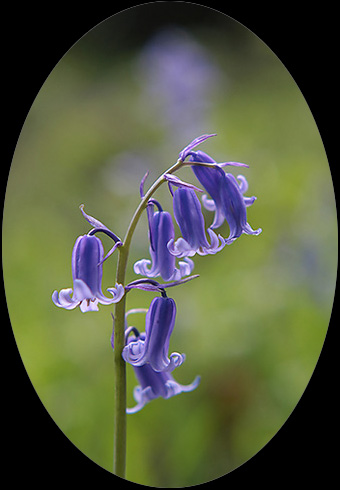
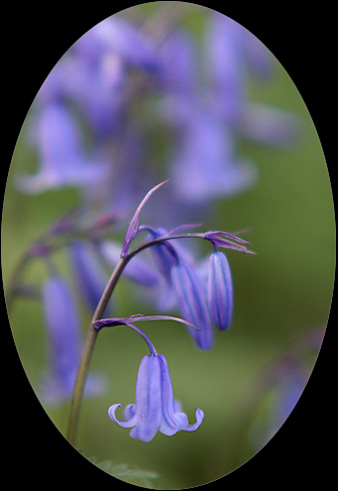
Bluebells can be found within the longer grasses in the shady parts specially under trees.
The majestic bluebell loves the damper, shady spots. As the flowers get older they can change colour fading to a lighter blue. Unless we get down and have a closer look we can miss a lot of the intricate detail of the petals. Small flies and beetles love to perch on the delicate petals.
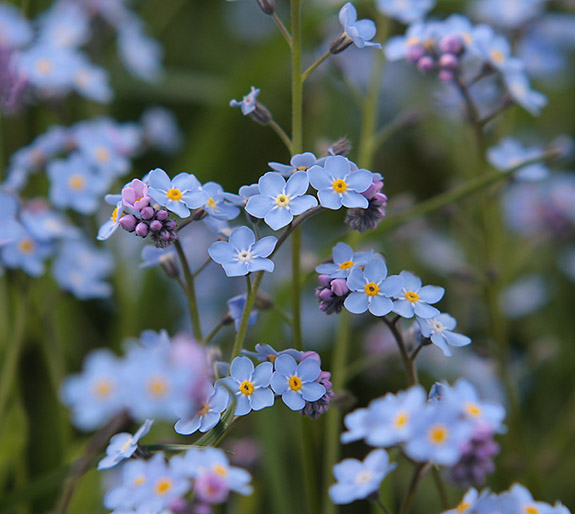
The tiny flowers of the forget-me-knot.
The forget-me-knot is another plant that likes the shadier, damper areas although they can also be found in more open parts specially in the shorter grasses near hedgerows. As the flower buds emerge they change from a light purple to blue as the flowers fully open.
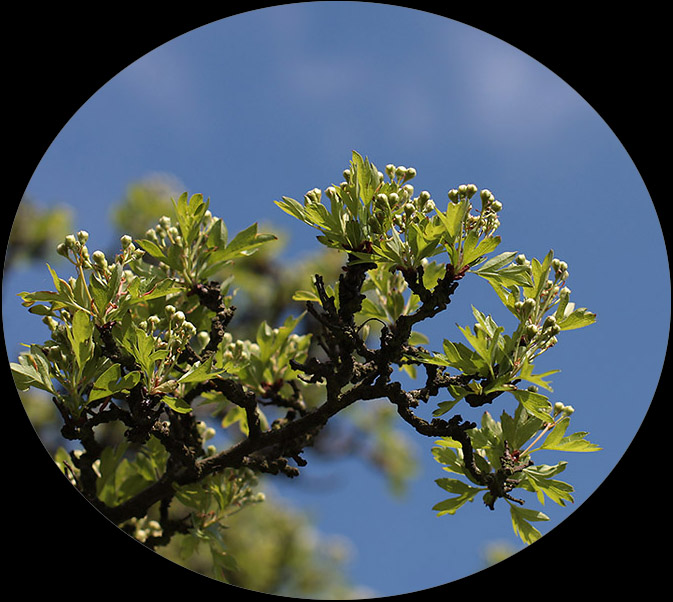
Hawthorn flowers just before opening on the old gnarled branches.
In the north late May is the best time to see the hawthorn in full flower, on many trees there is so much flower the whole tree looks like a snow storm has been whilst groups together seen at field boundaries and against dry stone walls provide a lovely spectacle.
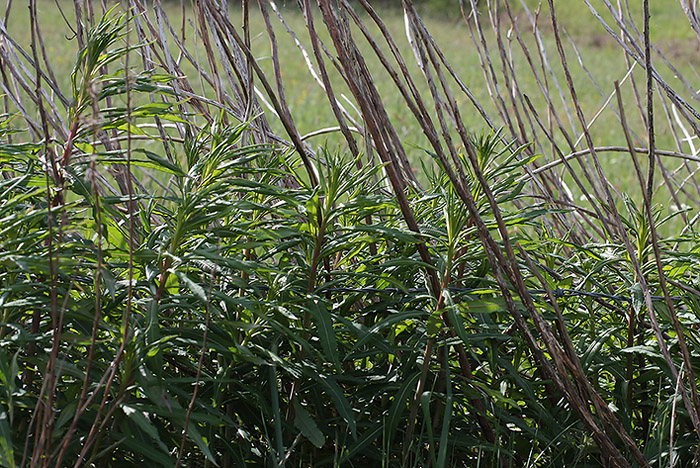
Dead vegetation together with new growth provide habitats for birds, insects and small mammals.
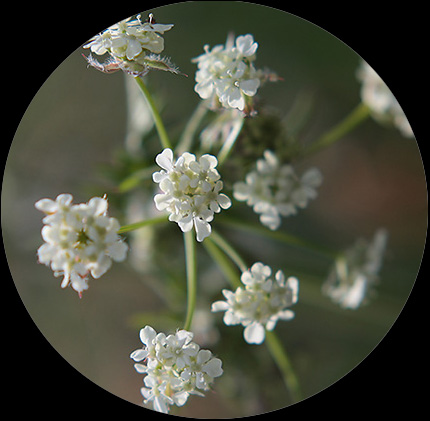
Tiny white flowers from a member of the carrot family.
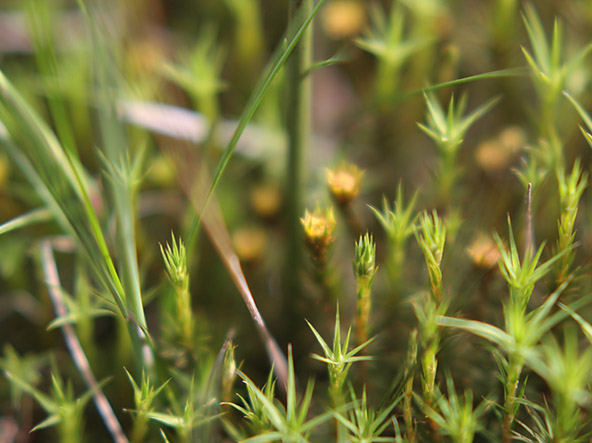
Mosses.
About half way along our path there is an overgrown narrow and boggy track leading down to Old Lindley Road, in winter the bog becomes a stream with water cascading onto the drain and in very bad weather onto the road but this dense vegetation provides and excellent habitat for mosses including small patches of sphagnum, [not shown here].
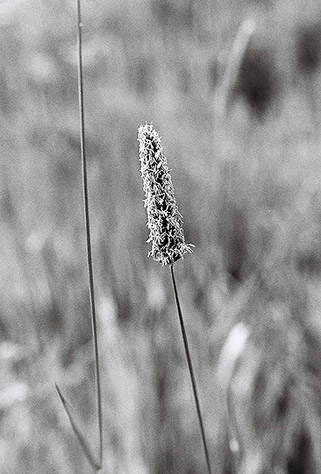
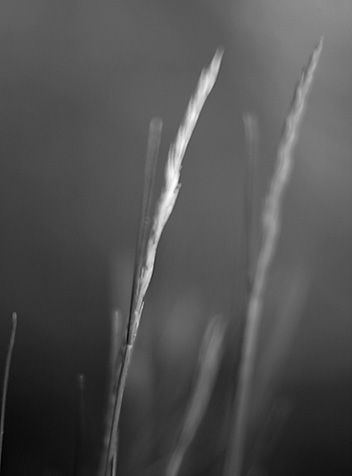
Several types of grasses inhabit the fields, some in flower.
The left picture of a flowering grass is a scan from our film mentioned earlier whilst a slow shutter speed used on the picture on the right catches the movement of some fine grasses in the breeze whilst leaving the stiffer stems in sharper relief.
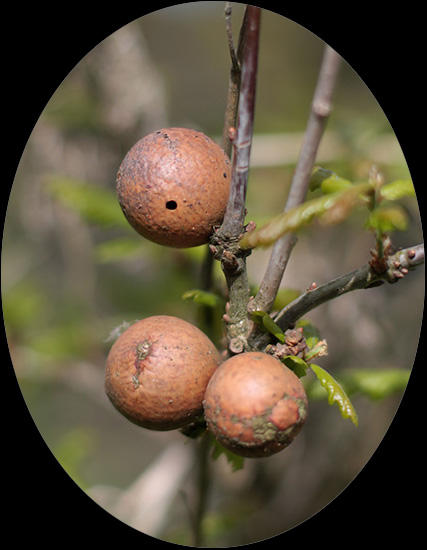
A gall wasp left its mark, here the galls are seen on a young oak.
The pictures above and below were also taken along the connecting boggy track between our 'top path' and Old Lindley Road but we are not going to continue down and join Old Lindley Road just yet but re-trace our steps back up onto the path and continue until we reach the end turning right onto New Road to make a circular walk where our views take in extensive hills from the road side.
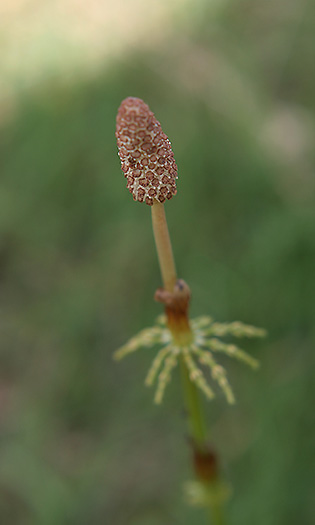
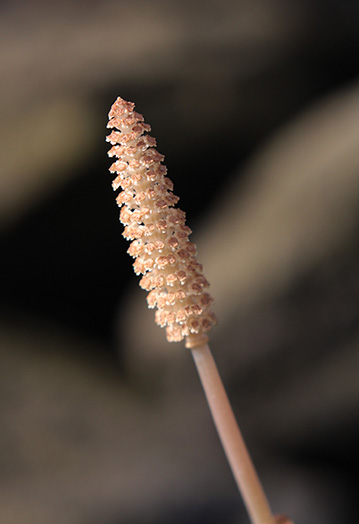
Fruiting bodies of horsetails, an ancient order of none flowering plant going back millions of years.
New Road.
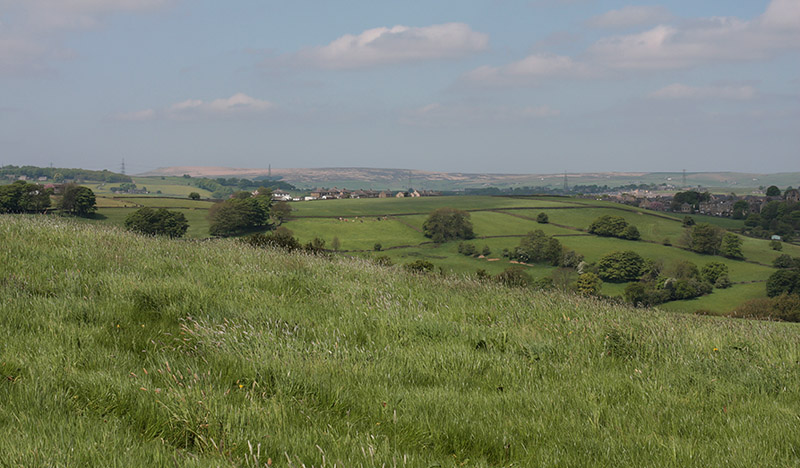
Turning right from the end of the 'top path' onto New Road gently rolling fields provide a tranquil backdrop to our left.
As we approach the end of the path we have the option of carrying on the roads to Outlane or turning right joining New Road and make a circular walk. To our left there are some lovely views as we start walking along the road both to local fields below and distant hills beyond, a good place to use some binoculars on a clear day!
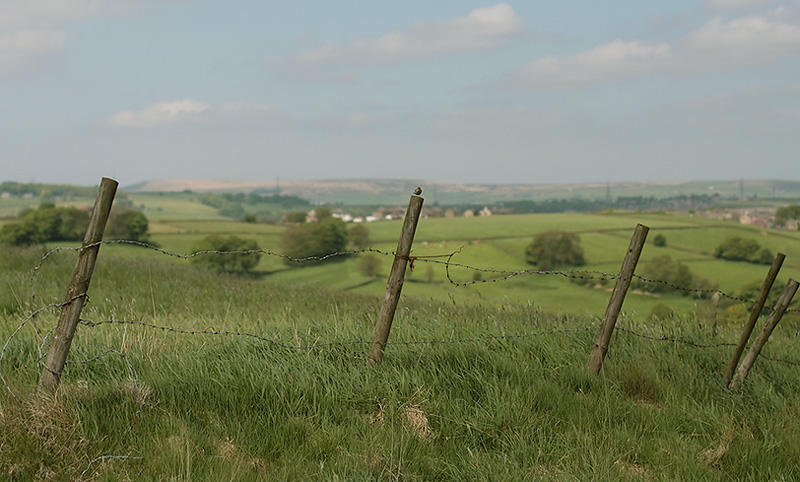
A solitary bird perches on a fence post in a calm spring morning.
Hmm.. no binoculars on me today! Aah well.. I am not certain what this little bird was but this is a typical haunt for the meadow pipits as they return from their glides from high in the sky later in the summer months whilst the phone wires strung between the supporting poles provide perches for swallows. I have heard few, if any skylarks singing in these fields but if you join Lindley Moor Road from Crosland Road the fields there which are not dissimilar being rough pasture I have heard and seen them many times specially in early spring. Very occasionally I have seen little owls sitting on fence posts in the lower fields of Old Lindley but not for a long time now.
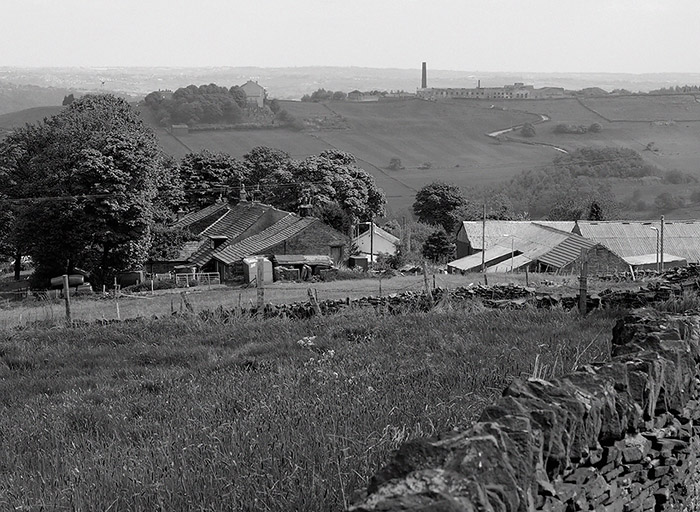
Walking further down New Road we meet some old cottages and farm buildings.
As we descend along New Road we are greeted with the cottages and farm buildings of Old Lindley some of which seem to date back in time considerably. In the background of the above picture against the skyline are the old chimney and buildings of the brickworks in Blackley and just visible to the far left above the trees a solitary new wind generator probably for the church. We never know when new developments may occur so capturing pictures like these are a 'snap shot' in time as man changes his environment.
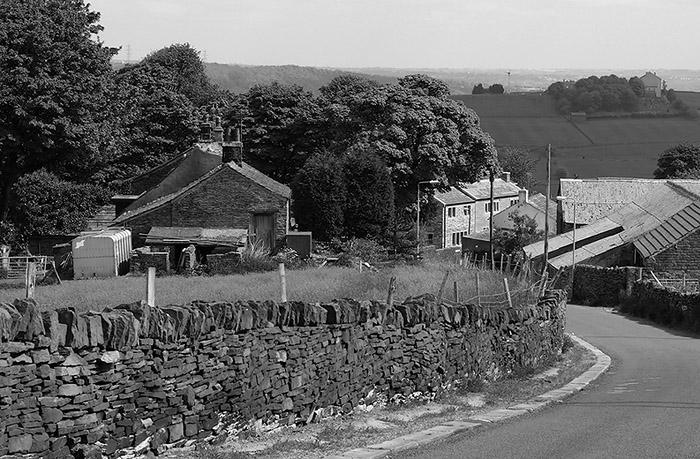
As we move closer, the 'old and the new' emerge whilst the dry stone walls provide the lead in.
For the 17 or so years I have been walking these roads Old Lindley for the most part has remained unchanged except for alterations and re-furbishing to one or two premises and re-building sections of dry stone walls.
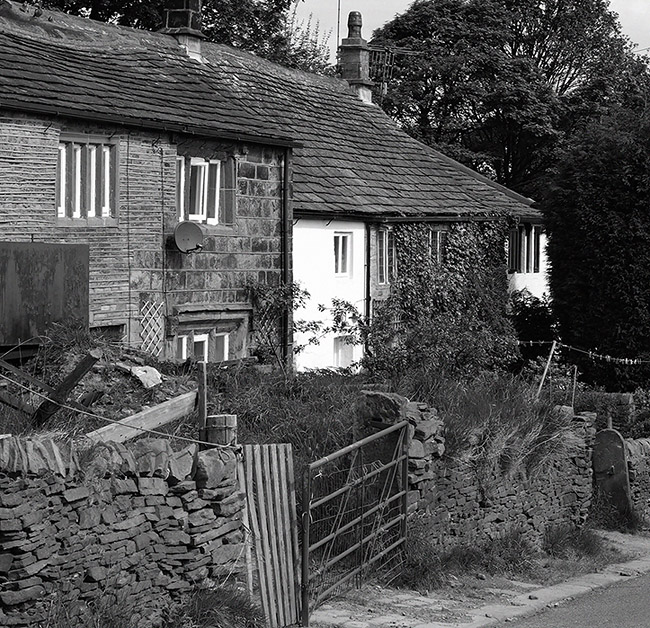
Some day these old cottages may be renovated, photographs are a good record of what once was.
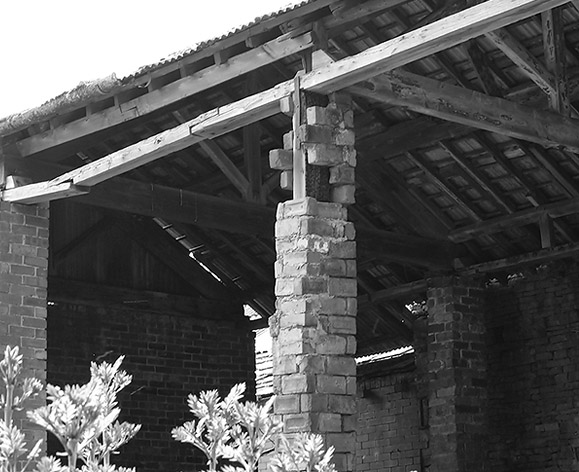
Defying gravity for a while longer this old barn is an excellent place for swallows to make their nests.
As we pass the old cottages and farm buildings of Old Lindley seen in the above pictures we see that New Road veers off down to the left, this would take us shortly to Jagger Green but we are not going to continue along New road but re-join Old Lindley Road and walking back will fairly soon bring us to where we started. First the road descends further past cottages and a pottery on our left which has now been sold off to make way for private dwellings but soon the road levels out and we see a small but deep wooded valley where a stream runs whilst in spring bluebells, grasses and daffodils cling to the steep banks. At this point I took the picture below seeing morning light dancing on and behind these young leaves.
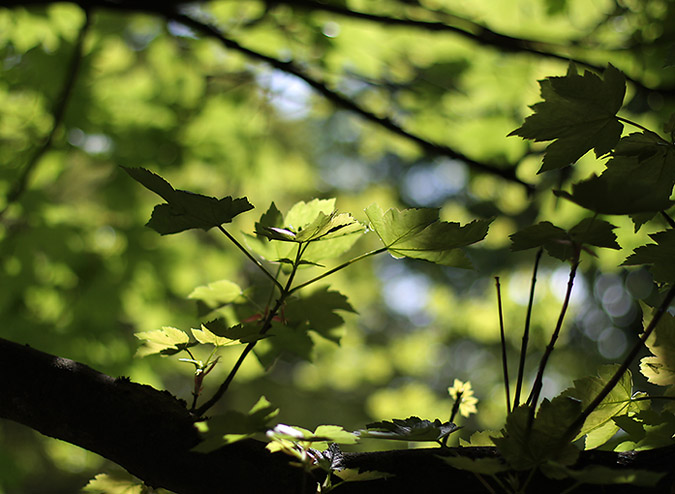
Backlit leaves in the canopy of trees provide a serene picture.
I think there is always something magical about the canopy of leaves in trees in dappled light creating a sense of peace and tranquility, together with a cool spring breeze or even rain the sight and sound is memorable. The shade provided by trees can provide a 'micro climate' making the air temperature feel a few degrees cooler specially in the warmer summer months providing welcome relief from the heat on longer strolls.
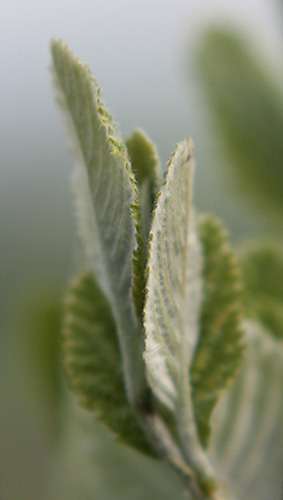
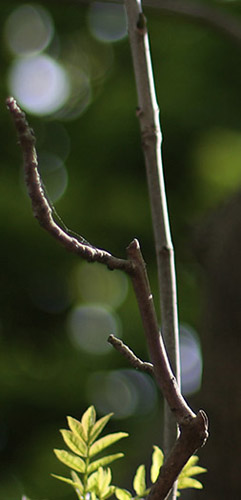
Emerging leaves of spring.
The underside of some leaves have many tiny hairs creating a 'silvered' effect specially seen in sharp relief like on the left photograph, whilst the camera picks up the tiny light patches coming through leaf canopy as though they are floating mystical orbs. This time of year can be a very good time to have a small hand lens in your pocket typically 5x to 10x magnification to look at nature a bit more closely.
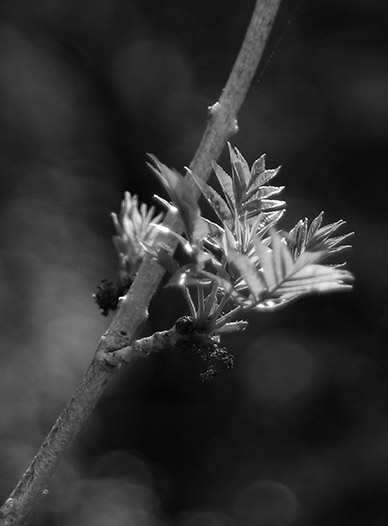
Young leaves catch the morning light.
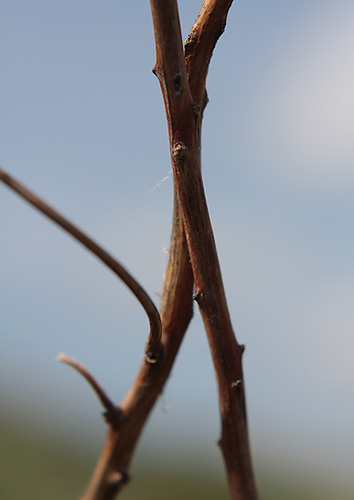
Entwined symmetry of twigs against the light.
Here some dead twigs, may be from last years growth, against the sky and clouds can be as attractive as any man made piece of esoteric sculpture. Often with these pictures the more mellow light from a weak sun through high cloud can create a more atmospheric backdrop rather than a brilliant rich blue of clear skies, indeed the greys of the light during misty mornings can be ideal for webs, droplets and more monochromatic based images.
Foggy weather and a mobile phone!
Just a few days after taking the pictures for the main body of the article we had cool and very foggy weather for a couple of days, this together with heavy rain turned the 'top path' into areas of pools again.. just as I was seeing it dry out quite nicely! Just a day later and the temperatures were back up to 18C with high humidity and sunny spells showing the marked variation in weather we can have in this area in short periods of time.
I like the fog for walking in providing interesting backdrops and nicely saturated colours. I often carry a mobile phone with me and the quality of the cameras on these has improved dramatically over the last couple of years from poor.. suitable only to send to other phone users to ones now with 2-5Mp cameras built in and I'm sure there will be further improvements. I have used three phones with built in cameras but my current Sony K800i has a 3Mp camera with good macro down to a few inches and more importantly a focusing lens this is by far the best phone camera I have used compared to my previous Nokia and Samsung with good conversion to black and white without too much noise spoiling the photo and very easy file transfer to PC by the supplied USB cable. The following pictures were taken on the K800i at a lower in phone resolution setting of 2Mp.
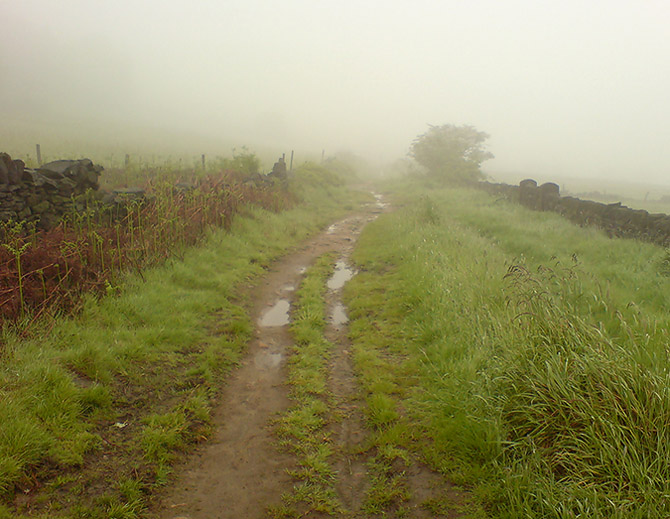
The 'top path' after heavy rain and disappearing into the fog.
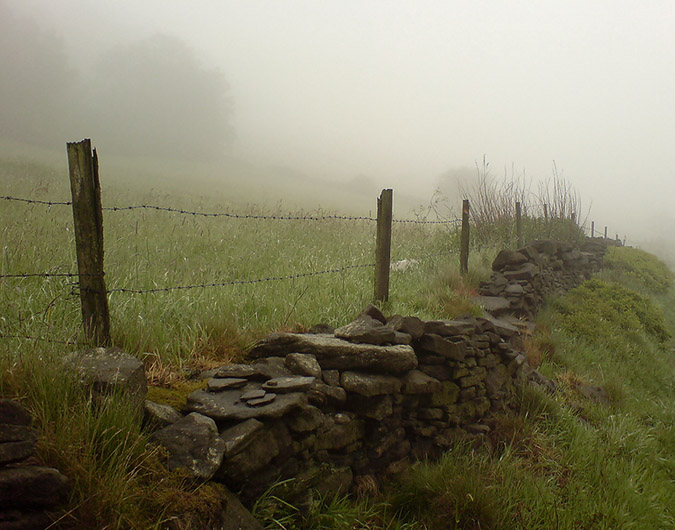
'Top path' field boundaries in thick fog.
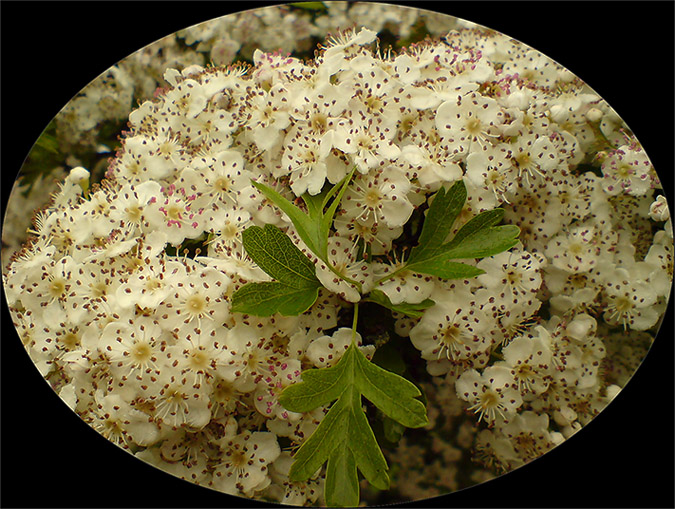
Hawthorn flowers.
Here the phone camera has done a good job of macro, with pleasing detail and colour.
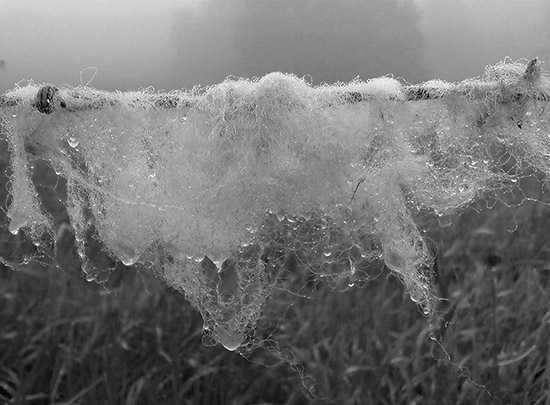
Rain soaked wool caught on barbed wire.
Black and white images suit these type of subjects well. B & W conversion in Photoshop.
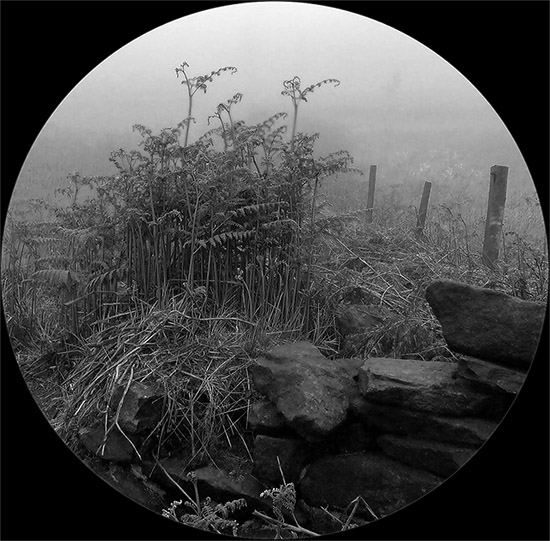
Bracken against posts and dry stone wall. B & W conversion in Photoshop.
I hope you have enjoyed some of the pictures from my virtual tour of Old Lindley and surroundings associated with the area. This is but a small glimpse from the many different birds, plants, trees and landscapes that can be seen through the seasons and remember 'Sitting quietly doing nothing'... take a tip from the old Zen masters and give yourself some time to stand, stare and walk the hills and lanes of your area... Enjoy!
Link to my first article 'Old Lindley Moor' written in 2007.
Jagger Green near Huddersfield, August 2008 article.
Comments to the
author,
Ian
Walker,
are welcomed.
Published in the June 2008 edition of Micscape.
Please report any Web problems or offer general comments to the Micscape Editor .
Micscape is the on-line monthly magazine of the Microscopy UK web site at Microscopy-UK
© Onview.net Ltd, Microscopy-UK, and all contributors 1995
onwards. All rights reserved.
Main site is
at www.microscopy-uk.org.uk
with full mirror
at www.microscopy-uk.net
.